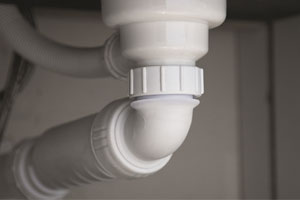Water traps – including U or S bends which create water seals to prevent sewer gases passing from drainage pipes back into a building – have been around for many years, but new guidance from the BPF Pipes Group suggests there may be a more modern, effective alternative: the waterless trap.
UK building regulations require any appliance that discharges water to a drain to be fitted with a water trap to prevent foul gases entering the building. However, there are a number of conditions which can lead to a loss of the water seal, such as self-siphonage, compression, evaporation, foaming, leakage and movement. In comparison, a waterless trap often contains a self-sealing flexible membrane, which removes many of the factors causing water traps to lose their seals. They are also space-saving, which minimises cutaway requirements, they maintain a seal even if water use is intermittent, and by allowing air to pass through the fitting on the inlet side, they may be used to replace branch drainage ventilation – removing the need for secondary ventilation pipework. Waterless traps can prove particularly useful in higher  temperature situations, such as where there are unvented hot water storage systems.
temperature situations, such as where there are unvented hot water storage systems.
There are currently no UK or European standards which specify the performance of these traps, but if used correctly waterless traps can offer significant benefits. Therefore the BPF Pipes Group guidance clarifies what technologies are available, what to look for in product specification to ensure the correct system for a building’s needs and top tips for good practice installations. Overall, the guidance continues the BPF Pipes Group’s support for best practice in the industry and for innovative construction methods.
The new guidance is available at https://www.bpfpipesgroup.com/support-downloads/guidance-notes/ and details of BPF Pipes Group members who manufacture and supply waterless traps can be found at https://bpfpipesgroup.com/application-groups/ag2-building-services/

Add new comment